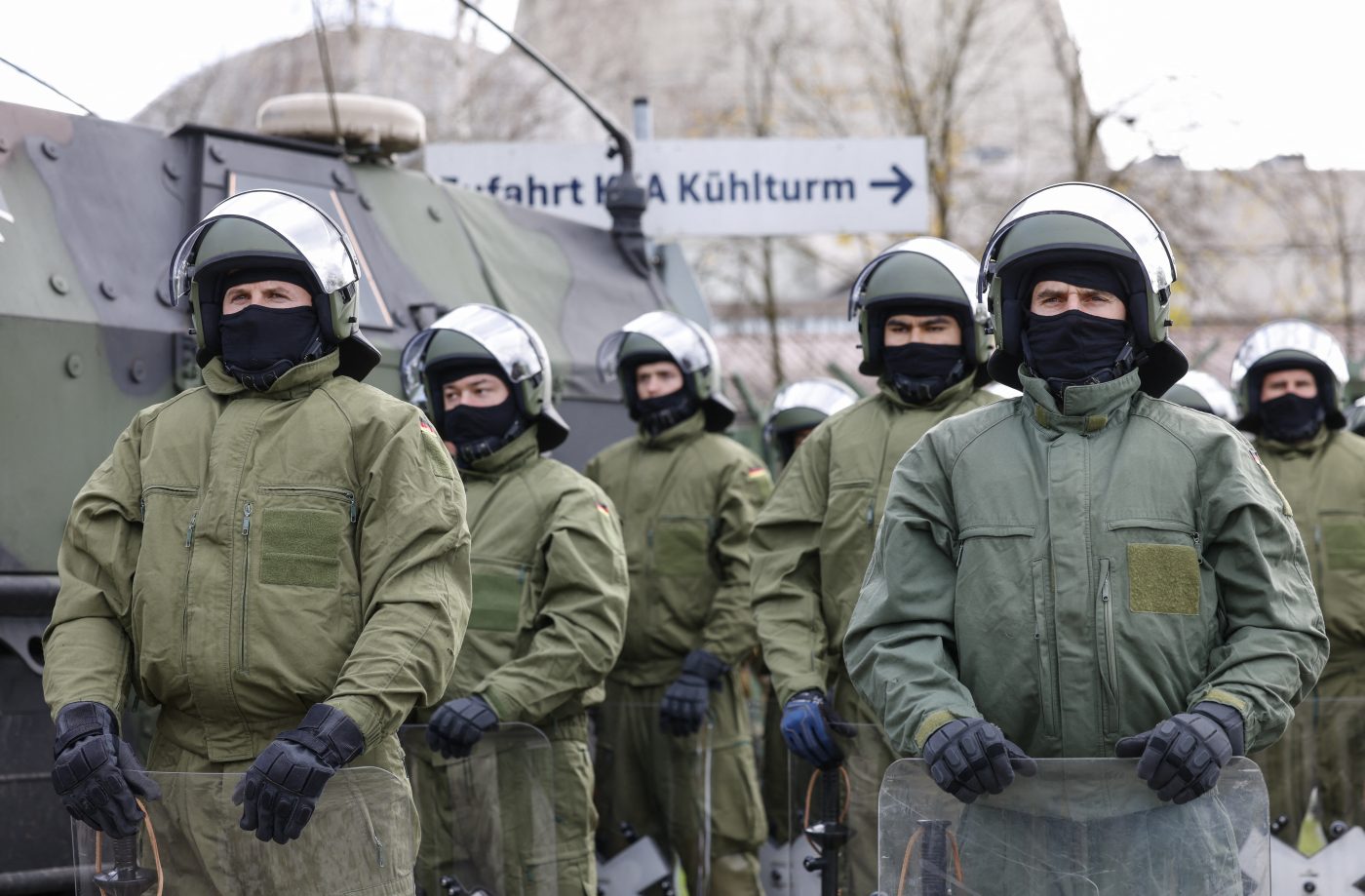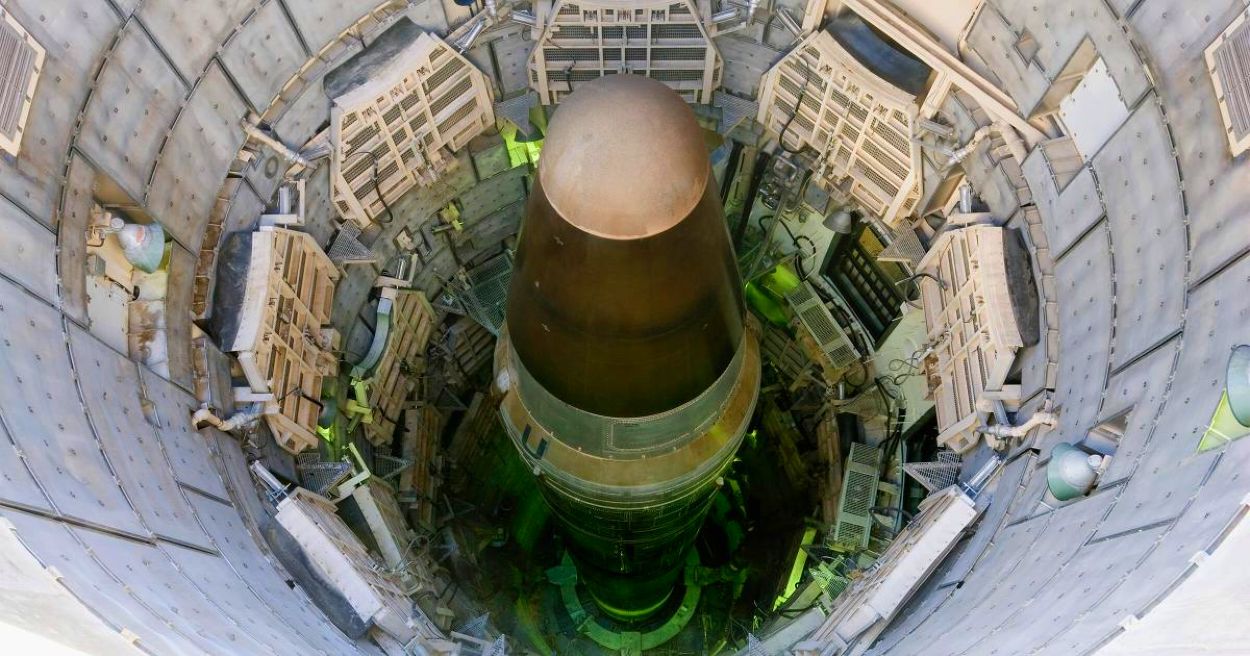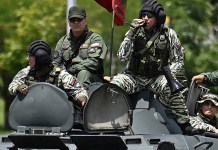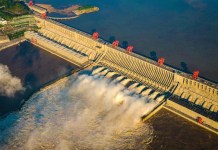The world is about to enter a dangerous nuclear age, where the consensus reached during the last century on not testing new nuclear weapons is no longer honoured.
Earlier this week, the US President Donald Trump instructed the Department of War to “immediately” resume nuclear weapons testing, pushing the world into a new, dangerous era.
On October 29, Trump posted this on his Truth Social site:
“The United States has more Nuclear Weapons than any other country. This was accomplished, including a complete update and renovation of existing weapons, during my First Term in office. Because of the tremendous destructive power, I HATED to do it, but had no choice!”
“Russia is second, and China is a distant third, but will be even within 5 years. Because of other countries’ testing programs, I have instructed the Department of War to start testing our Nuclear Weapons on an equal basis. That process will begin immediately. Thank you for your attention to this matter! PRESIDENT DONALD J. TRUMP.”
Notwithstanding the many factual errors in this post, such as the claim that the US “has more Nuclear Weapons than any other country” (actually, it’s Russia), or the claim that China’s nuclear arsenal will be even with the US within five years (China will need to produce almost 2,000 nuclear bombs every year for that), resuming nuclear testing is still a terrible idea, fraught with many environmental, economic, and geopolitical risks.
However, its biggest danger is that the world can once again return to an era where all countries are conducting nuclear tests.
Indeed, it was after years of hard work, confidence-building measures, and over 2,000 nuclear tests that the world reached a common understanding on banning nuclear weapons testing.
The Long Road To Banning Nuclear Weapons Testing
In 1963, the United States, the United Kingdom, and the Soviet Union banned nuclear testing in the atmosphere, outer space, and underwater through the Partial Test Ban Treaty in response to devastating environmental effects and in the aftermath of the Cuban Missile Crisis.
This was followed by the Threshold Test Ban Treaty in 1974 that limited the yield of underground testing to below 150 kilotons. And finally, the 1997 CTBT banned all nuclear testing. A total of 187 countries have signed the CTBT.
However, despite the CTBT regime, some nuclear weapons tests continued.
For instance, India, Pakistan, and North Korea refused to sign the CTBT. India and Pakistan conducted nuclear tests in 1998, and North Korea conducted its first nuclear test in 2006.
India did not sign the CTBT, but committed to a unilateral, voluntary moratorium on nuclear weapons testing after its 1998 tests.
Additionally, many countries, including the US and China, signed the treaty, but never ratified it.
Citing Washington’s failure to ratify the treaty, Russia also “de-ratified” it in 2023.
Though the CTBT never entered into force, the world, barring a few exceptions, followed the moratorium on nuclear tests.
However, now in a whiff, Trump can force the world back into the Cold War era of nuclear arms race and competitive upmanship by conducting more nuclear tests with higher yields.
1945 To 1990: The Era Of Nuclear Arms Race And Competitive Testing
The history of nuclear testing began early on the morning of 16 July 1945 at a desert test site in Alamogordo, New Mexico, when the United States exploded its first atomic bomb.
In the five decades between that fateful day in 1945 and the opening for signature of the Comprehensive Nuclear-Test-Ban Treaty (CTBT) in 1996, over 2,000 nuclear tests were carried out all over the world.
The US led the world in nuclear weapons testing, as it conducted more than half of these tests. Between 1945, when the US conducted its first nuclear test, and 1992, when the US conducted its last nuclear test, the US conducted as many as 1,032 nuclear bomb tests.
Russia was second, conducting 715 tests between 1949 and 1990.
The United Kingdom carried out 45 tests between 1952 and 1991.
France carried out 210 tests between 1960 and 1996.
China carried out 45 tests between 1964 and 1996.
India conducted 1 test in 1974 and followed up with five more tests in 1998.
Pakistan also conducted six nuclear tests in 1998.
The Democratic People’s Republic of Korea conducted nuclear tests in 2006, 2009, 2013, 2016, and 2017.
Overall, between 1945 and 1995, nearly 2,022 nuclear tests were conducted, averaging more than 40 nuclear tests every year, or more than three nuclear tests every month.
For those born after 1990, it is indeed hard to fathom that there was a time when the world was conducting more than 40 nuclear tests every year.
Indeed, nuclear bombs might be the only weapon in the world that has been used only twice, but has been tested more than 2,000 times.
Clearly, a lot of these nuclear tests were not to check the lethality of the bombs, or to collect data, but to simply signal their resolve that they can push the world into a nuclear armageddon if their interests or sovereignty are challenged.
Given that one nuclear test can cost around US$100 million, a massive amount of money was wasted in just showing resolve.

Types Of Nuclear Tests
Nuclear explosions have been detonated in all environments: above ground, underground, and underwater. Bombs have been detonated on top of towers, onboard barges, suspended from balloons, on the earth’s surface, underwater to depths of 600m, underground to depths of more than 2,400m, and in horizontal tunnels.
Test bombs have been dropped by aircraft and fired by rockets up to 200 miles into the atmosphere.
Atmospheric Testing
Atmospheric testing refers to explosions conducted in or above the atmosphere.
Of the over 2,000 nuclear explosions detonated worldwide between 1945 and 1996, 25 % or over 500 bombs were exploded in the atmosphere: over 200 by the United States, over 200 by the Soviet Union, about 20 by Britain, about 50 by France, and over 20 by China.
However, strong objections were raised by experts over the risks of radioactive fallout from atmospheric nuclear testing at least since the 1950s.
Castle Bravo: The Nuke Test That Awakened The World From Its Slumber
In March 1954, the United States tested its hydrogen bomb Castle Bravo in the Pacific’s Marshall Islands. The Bravo test created the worst radiological disaster in the United States’ testing history.
By accident, local civilians on the Marshall Islands, US servicemen stationed on Rongerik atoll, and the Japanese fishing trawler Lucky Dragon, were contaminated with the fallout.
The Bravo detonation in the Castle test series had an explosive yield of 15 megatons—1,000 times that of the weapon that destroyed Hiroshima and nearly three times the six megatons that its planners had estimated.
The detonation vaporized some ten million tons of sand, coral, and water that turned into a 100-mile-wide fallout cloud spewing radioactive debris on the inhabitants of Marshall Island atolls, U.S. military personnel, and Japanese fishermen aboard the Lucky Dragon.
Bravo’s fallout necessitated the evacuation of over 230 people from Rongelap, Rongerik, and Utirik atolls (all part of the U.S. trusteeship for the Marshall Islands), including 28 U.S. military personnel on Rongerik.
The people of Rongelap had the most significant exposure to radioactive contamination. When the toxic cloud arrived at Rongelap, located about 110 miles from the test site, the fallout looked like snow; children played with the irradiated flakes while others kept working on outdoor tasks. The immediate health effects were severe and long-lasting, and Rongelap became uninhabitable.
In addition, 23 Japanese fishermen aboard the Lucky Dragon were sickened by radiation exposure, and the subsequent death of one crewman helped bring international media attention to the dangers of nuclear fallout.

The Long Road To Banning Nuclear Tests
The 1963 Partial Test Ban Treaty banned atmospheric testing. Negotiations largely responded to the international community’s grave concern about the radioactive fallout from atmospheric tests.
The United States, the Soviet Union, and the United Kingdom became Parties to the Treaty; France and China did not. France conducted its last atmospheric test in 1974, and China in 1980.
Later in 1990, the Soviet Union proposed a moratorium on nuclear testing that was agreed to by the United Kingdom and the United States.
The Soviet Union’s last nuclear test took place on 24 October 1990; the United Kingdom’s on 26 November 1991, and the United States’ on 23 September 1992. France and China conducted their last tests in January and July 1996, respectively, before signing the Comprehensive Nuclear-Test-Ban Treaty.
France closed and dismantled all its nuclear test sites in the 1990s — the only nuclear-weapon State to date that has done so.
Since 1996, only three states- India, Pakistan, and North Korea have conducted nuclear tests. However, after their 1998 tests, both India and Pakistan have announced unilateral moratoriums on nuclear testing and have conducted no nuclear tests since 1998.
It took the world nearly 50 years, over 2,000 nuclear tests on ground, underwater, and in the atmosphere, billions of dollars, and hundreds of thousands of victims of radiation leaks to reach a consensus on nuclear weapons testing.
For example, since 1990, the US Department of Justice has awarded US$2.6 billion to over 41,000 claimants under the Radiation Exposure Compensation Act (RECA) from states including Nevada, Colorado, New Mexico, Utah, and Texas.
A single nuclear test by the US can push the world into a new nuclear weapons race. Furthermore, if the US conducts a new nuclear test, it can start a chain reaction, as surely Russia and China will also conduct new nuclear tests.
Additionally, it must be noted that while countries like the US, France, and Russia have collected huge amounts of data on their bombs through hundreds of tests, countries like China and India have not.
They might relish the opportunity to conduct new nuclear tests, collect more data, and improve their bombs.
Furthermore, the US will lose the moral argument to stop countries like Iran from pursuing nuclear weapons when it is itself conducting nuclear tests.
Due to all these reasons, Trump must think twice before restarting the nuclear arms race, for the risks of any new nuclear test far outweigh any potential benefits.
- Sumit Ahlawat has over a decade of experience in news media. He has worked with Press Trust of India, Times Now, Zee News, Economic Times, and Microsoft News. He holds a Master’s Degree in International Media and Modern History from the University of Sheffield, UK.
- VIEWS PERSONAL OF THE AUTHOR. THIS IS AN OPINION ARTICLE
- He can be reached at ahlawat.sumit85 (at) gmail.com




